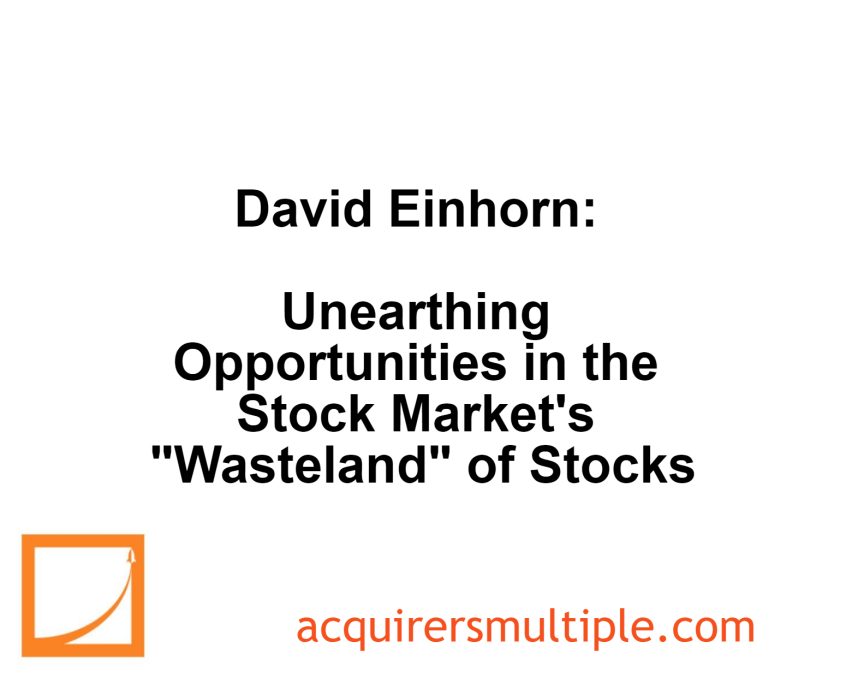In his recent interview with The Money Maze Podcast, David Einhorn discussed the shift in his value investing strategy to take advantage of changes in the investment environment. Here’s how his strategy has changed:
- Past: Focused on identifying undervalued stocks before the market realizes their potential. This relied on market interest driving the stock price up
- Present: Emphasis on finding fundamentally strong but neglected companies (“wasteland” of stocks)
- Reasoning:
- Traditional methods (analysts’ recommendations) are irrelevant because they lack influence on under-followed stocks
- Low investor attention allows buying these stocks at a discount (e.g., 4-5 times earnings instead of 10)
- Even if the company underperforms slightly (e.g., misses earnings by 10%), the low price point offers a buffer
- Long-term, these companies’ strong fundamentals (high earnings yield) and shareholder-friendly actions (dividends, buybacks) should lead to positive returns
Here’s an excerpt from the interview:
Einhorn: We’re not doing what we were doing anymore.
What we’re doing now is we’re saying what do we have to do to make a good return if a tree falls in a forest and nobody is there to hear it?
What happens if there aren’t other investors who are going to bid up the stocks and figure out what we have figured out after we figured it out, because that’s what we used to do.
And so what you need is companies that are earning the result of this though is that you have this enormously bifurcated market where there’s this wasteland of companies where literally nobody’s paying attention and nobody is following.
And maybe they’re sell-side analysts, but sell-side analysts don’t matter, they don’t have any money, they don’t have any customers, and the fact that they don’t have any customers with any money is the important thing.
It doesn’t matter if there’s 10 analysts recommending a stock if they don’t have any customers that are going to follow the recommendations the point is is there’s no buyers.
You have these washed out securities and if they’re trading now instead of buying it at 10 times earnings because you think that they’re going to beat, you can buy that same type of situation at four times earnings. or five times earnings.
And then you may not know whether it’s going to be… if you’re wrong by 10%. A five multiple becomes five and a half, and there’s nobody who cares anyway, nobody’s going to sell because they missed by 10%.
So you don’t really have to get your forecast right you need to just start at such a low value, and if you do it in unlevered companies that are taking the vast majority of that earnings yield and giving it to you in dividends or buybacks this has to work itself out over time in a favorable way.
You can listen to the entire discussion here:
For all the latest news and podcasts, join our free newsletter here.
Don’t forget to check out our FREE Large Cap 1000 – Stock Screener, here at The Acquirer’s Multiple:



